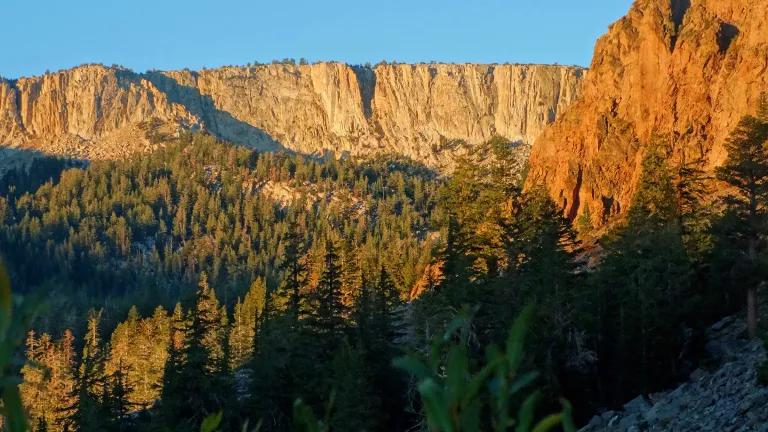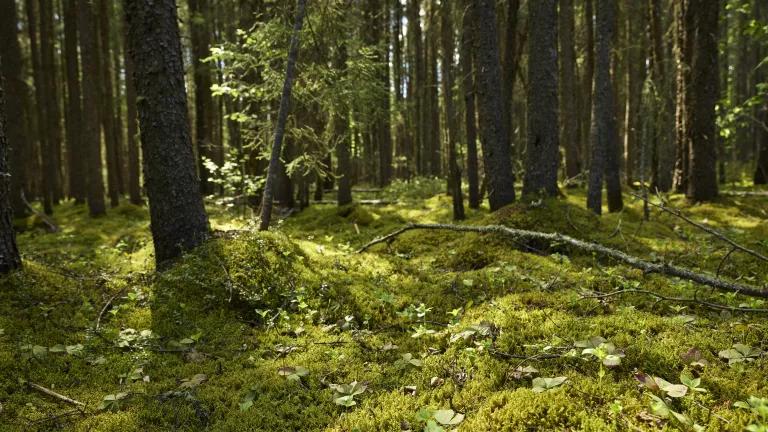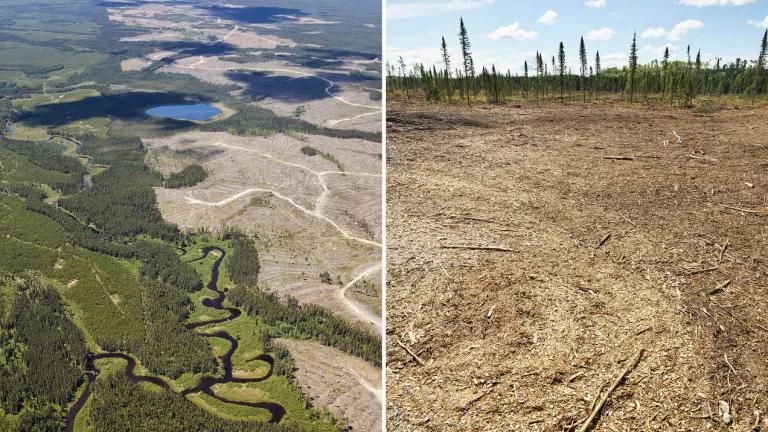Using Community Hardening and Forest Resiliency to Mitigate Wildfire Harm
More fires are coming, but scientists know what will keep us safe and help firefighters do their jobs. Let’s take action to get it done.
Governor Gavin Newsom's recent budget proposal continued a trend that Californians are becoming accustomed to: the allocation of billions of dollars to fight wildfires—$2.7 billion over five years, to be exact.
The budget increases for fighting fires have followed a similar trajectory to wildfire impacts in California over the past 30 years.
Wildfires in California’s recent history have set records: the 2018 Camp Fire in Paradise was the deadliest in the state’s history, and the 2021 Dixie Fire became the largest single fire in the state’s recorded history. Wildfires are impacting millions of people, upending communities and costing lives.
As climate change worsens the impact and frequency of wildfires, the United States has invested primarily in wildfire response, funneling resources toward putting out fires for years. Costs have risen dramatically, with little correlation to a reduction in acres burned. Finally, the United States is expanding its focus to include prevention—fighting fires before they start. Therefore, it’s important to focus mitigation measures on proven and effective solutions.
We know that more fires are coming. Scientists have established what keeps communities safe and helps firefighters do their jobs. Let’s take action to get it done.

Protecting vulnerable communities from wildfires in the age of climate change
As we continue to face more damaging fires, the answer to adaptation resides in the communities themselves. The United States’ response to fire destruction is mainly in the hands of federal and state land-management agencies, whose responsibilities lie in fuel management and suppression. There is a critical role for homeowners and local governments to play, though, as home and community hardening is the most effective way to protect lives and structures.
Millions of people live in areas that are susceptible to wildfires
Massive community destruction is spread from structure to structure—with flying embers driven by weather. Dr. Jack Cohen, a former fire science researcher with the U.S. Forest Service, explains, “There is no management trend that shows we are going to be able to control all wildfires.” Because we know that, we must equip those communities to defend what they can: their homes and other buildings. Local governments can direct public funds and resources to implement proven home safety retrofits. Strategies like home hardening and vegetation buffers were immortalized this year by the “miracle house” in Lahaina, Hawaii. Wildfire experts say that retrofitting homes with fireproof materials and creating defensible space within 60 to 100 feet of all structures is the best way to protect people and property.
Notably, Cohen’s research underscores the same solutions that scientists have already advocated for at the state, regional, and national level. Currently, however, an analysis from Columbia University finds that these efforts tend to receive the least funding and policy support, despite ample evidence that wildfire-resistant construction and appropriate building codes are effective at reducing wildfire risk to communities. The California Governor's Office of Emergency Services offers grants for home hardening to qualified individuals, and additional efforts are underway in Colorado and Oregon to administer resources from federal and state-level departments to local jurisdictions. However, in Governor Newsom’s released budget for 2024, the $12 million home hardening pilot was completely cut. Scaling this up is critical as the currently available funds must match the magnitude of the problem.
Meanwhile, several communities are proactively approaching the issue and undertaking community-wide initiatives for home and community hardening. For example, Truckee, California, initiated a defensible space and home hardening education program in May 2022. Wildfire resilience projects were initiated in August 2022 and include evacuation improvement, a community-wide protection plan, tree thinning and forest health in the defensible space zone, and home hardening measures. Truckee, among other cities, are preparing themselves by focusing on the home, the defensible space, and the community. Their efforts and investments aim to reduce losses if (and when) there is a fire in the future.
Managing fire and fuel
Wildfire response strategies have long emphasized eliminating fires and managing forests. However, the United States has become so good at wildfire suppression that decades of managing fires have short-circuited the vital role that fire can play in forests. Wildfires have been an integral part of forests for thousands of years, both occurring naturally as well as being ignited by Indigenous Peoples as a means of forest stewardship, prior to colonization.
Allowing fire to play its role by introducing it in a managed, prescribed, and culturally appropriate way will benefit ecosystems and increase community safety. This is not to say that suppression should be eliminated everywhere—indeed, firefighters should continue to protect communities when fires are at their doorsteps. But, considering that fires have always played a role in managing landscapes, ongoing wildfire research and generational ecological knowledge point to allowing its occurrence in the backcountry.
Furthermore, decades of industrial forestry practices, fire suppression, and historic displacement of Indigenous communities have degraded forest ecosystems so that they are now less resilient to climate disruption. We need to spend a lot of time and energy properly restoring the forests that we have mismanaged up to this point.
Because anthropogenic climate change is a driver of the conditions that contribute to fires—increased temperatures, low humidity levels, winds, and drought—there is an urgent need to invest in a forest’s ability to defend against it. Forests play the all-important role of pulling carbon from the atmosphere and accumulating it in living trees, plants, and soils for decades to centuries. By preserving high-carbon-density forests like the mature trees and old-growth stands found in California, we can substantially increase forest carbon stocks in this century and encourage thriving forests for centuries to come.
Wildfires pose unique challenges to our homes and communities in fire-prone landscapes throughout the West. These challenges are very real and deserve our attention. Fire can be beneficial for many of our landscapes and play a restorative function. As we move forward to live and thrive with fire, we can build resilience by prioritizing precious resources for hardening our communities and restoring the ecological function of our forests.




